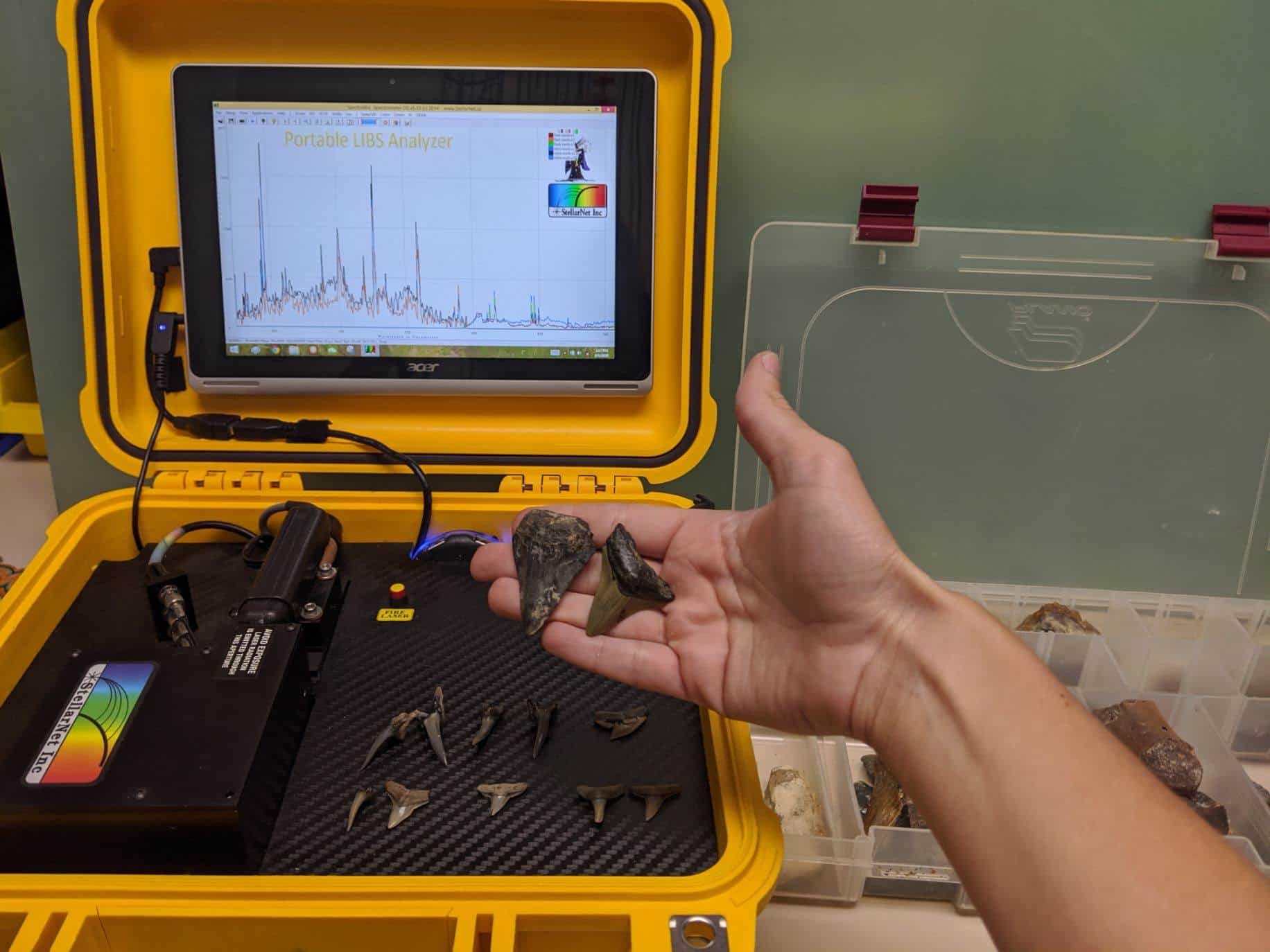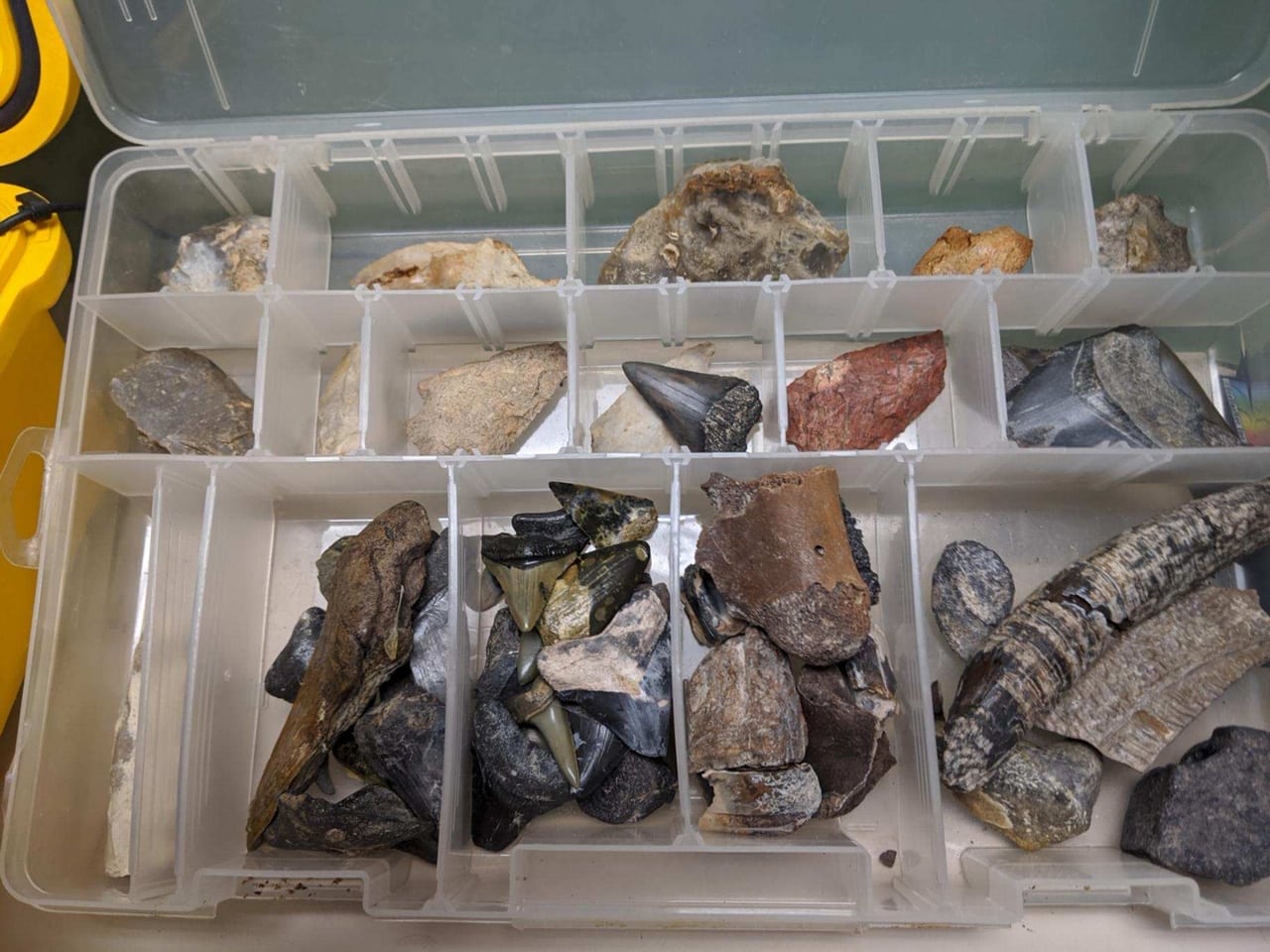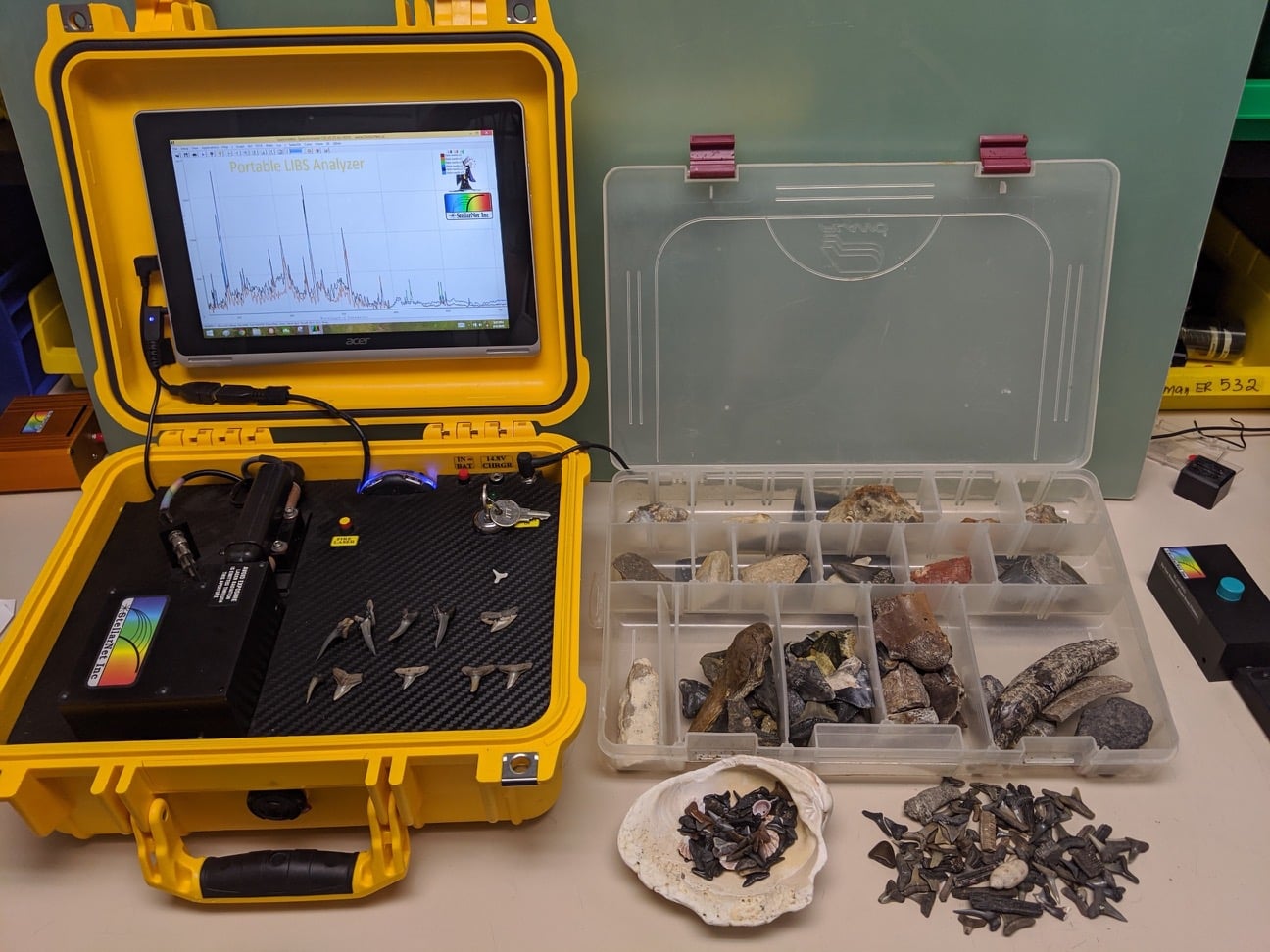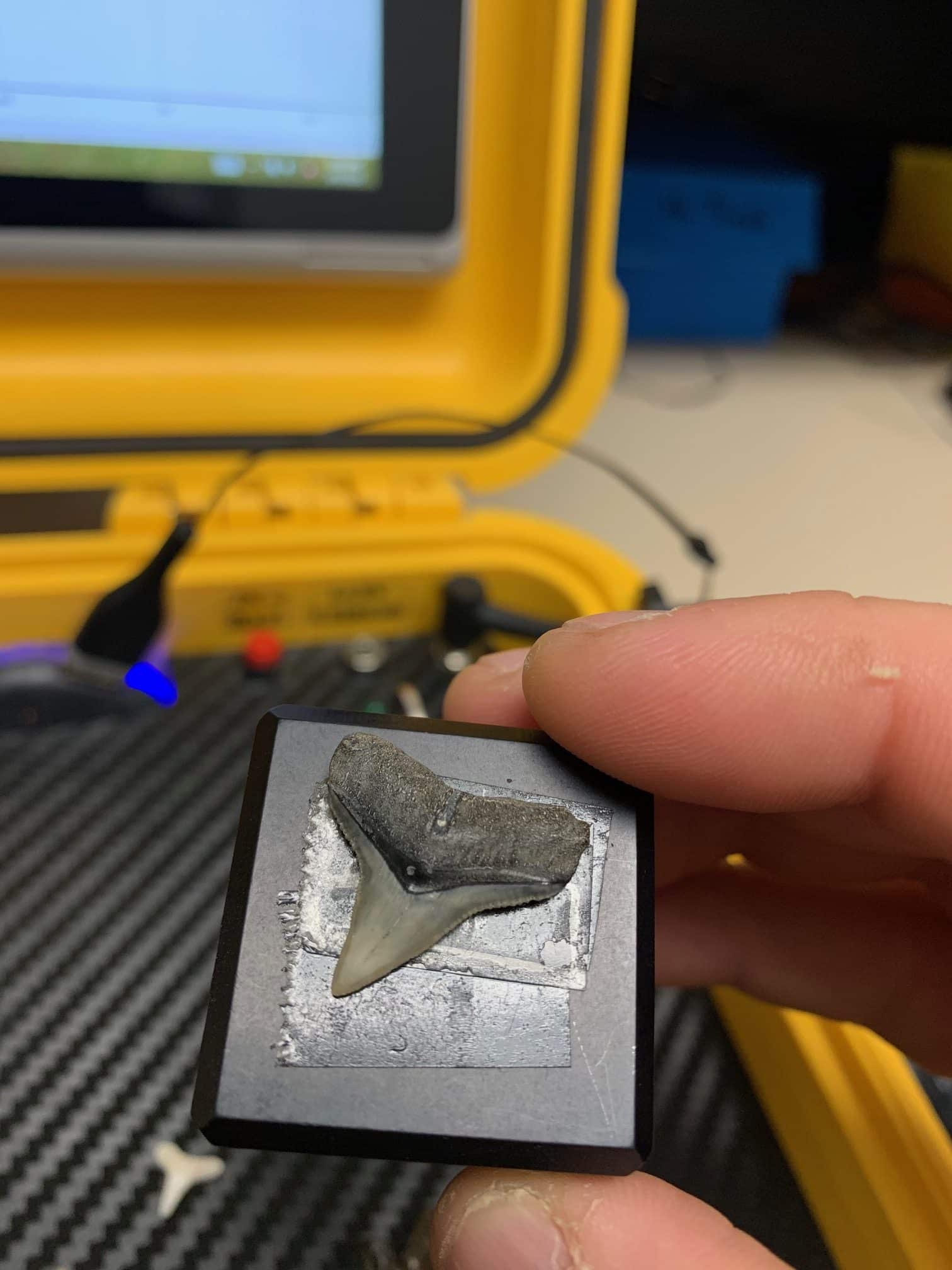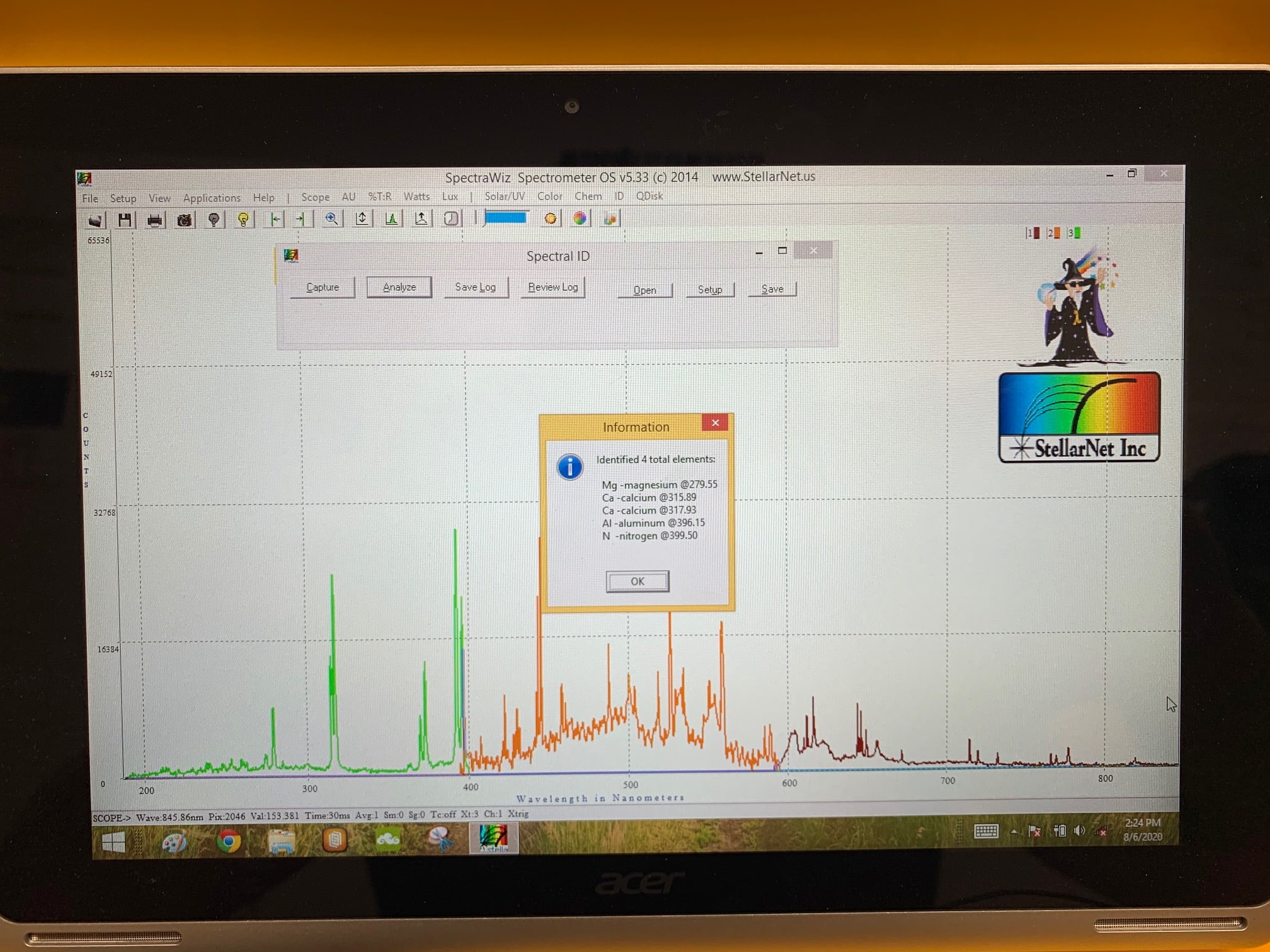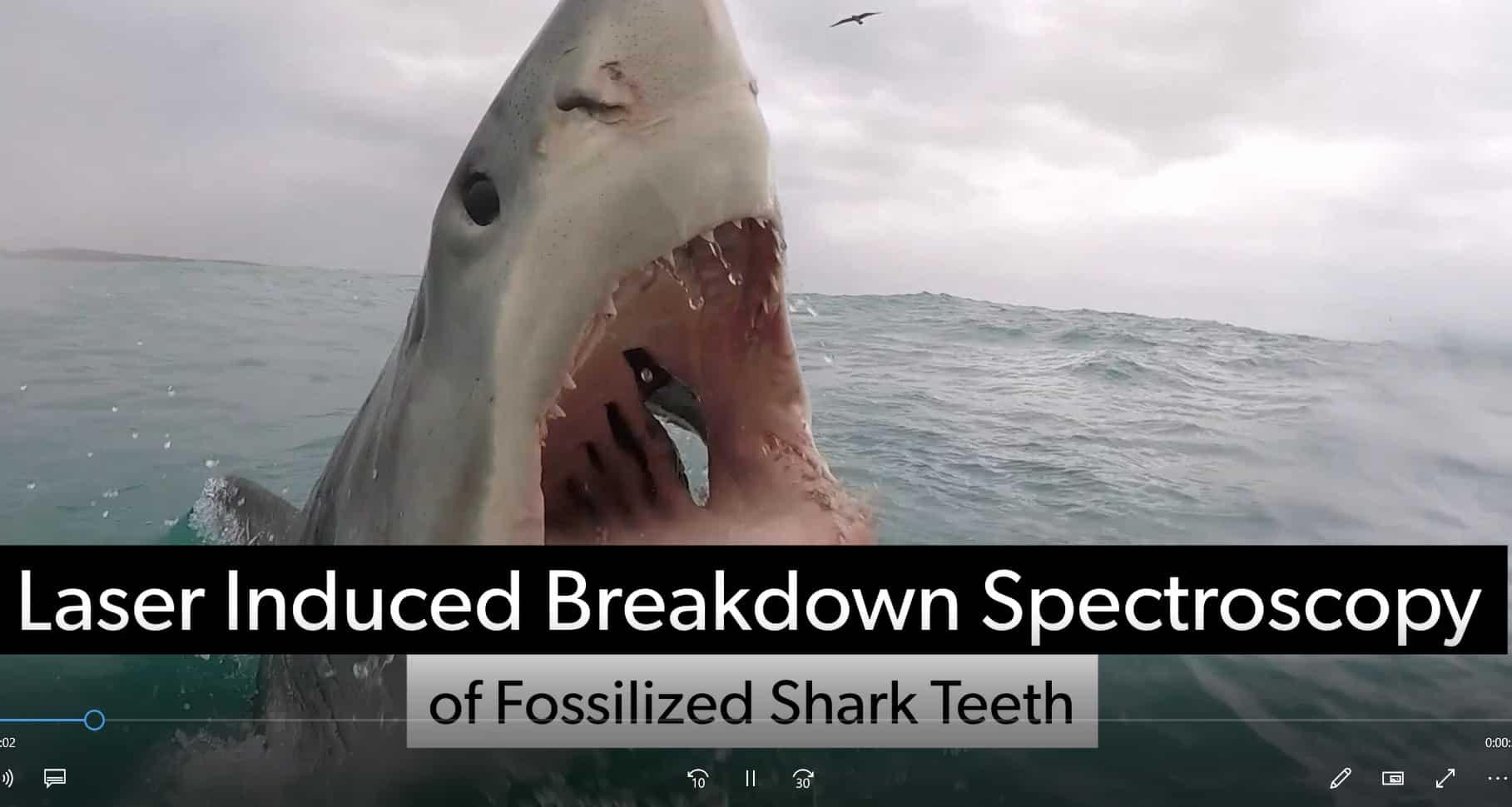
With “Shark Week” in full swing and our recent discovery of fossilized shark teeth on our Florida beaches, our applications team decided to analyze the teeth using Laser Induced Breakdown Spectroscopy (LIBS). Shark teeth are the most common fossil because sharks typically have 5 or more rows of teeth and are constantly losing and replacing them as they feed, at an estimated rate of 1 tooth lost per week per shark. As sharks lose teeth, they are replaced with sharper teeth from the next row. Bull Sharks are common in our waters and they have 50 rows of teeth!
Shark teeth are a lot like human teeth in that they are made up of a porous and elastic calcified tissue called dentin surrounded by hard enamel. Sharks don’t have to worry about getting cavities because on top of constantly replacing them, their teeth are acid-resistant and contain fluoride! The dentin rates a 3 on the Mohs hardness scale and the outer enamel rates a 5 – ensuring that they are durable enough for tourists and fossil hunters to collect them from the shoreline.
Teeth buried in sediments absorb surrounding minerals turning them from a typical white color to a darker black, grey, or tan color; this process can take roughly 10,000 years. Some teeth found on the beach can be millions of years old! Shark teeth don’t just reside in their mouths, their skin is made up of tiny tooth-like structures called denticles which are also made of dentin and enamel. These structures provide a protective sandpaper-like armor for the sharks and their shape helps the shark to move more quickly through the water.
LIBS or Laser Induced Breakdown Spectroscopy analyzes samples for elemental composition. Our portable StellarCASE-LIBS system blasts your sample with the world’s smallest 1064nm Nd:YAG laser with 25mJ per pulse. The laser created plasma cools and emits radiation specific to the elements inside the shark teeth. The LIBS system also contains high-resolution spectrometers that collect the emission and can match it to specific elements. We loaded the shark teeth into the LIBS chamber and took many sample spectra. Our shark teeth were all found in the same location so had very similar elemental structure and peaks. We found, of course, plenty of Calcium, also Magnesium, Aluminum, and Nitrogen. We overlaid spectra from the darkest and lightest colored teeth to show differences in peak height suggesting increased age or fossilization period.
Fossilization of sharks’ teeth requires that the teeth be buried in debris for thousands of years; this keeps abrasion down and reduces oxidation and bacteria responsible for decay. Fossilization of sharks’ teeth typically happens via a process called permineralization. Water seeps through the sediment carrying minerals into the porous teeth. Reactions of the minerals with oxygen can create an array of colors, much like how Oxygen reacts with Iron to create red pigmentation.
Fossil hunting is a popular hobby in Florida because the state is mostly made up of thousands of feet of thick limestone which was created by millions of years of deposits of dead sea life. David’s in-laws are enthusiastic fossil hunters and members of a local fossil hunting club, so they were kind enough to let us borrow some shark tooth specimens to view alongside the samples Kimberly collected.
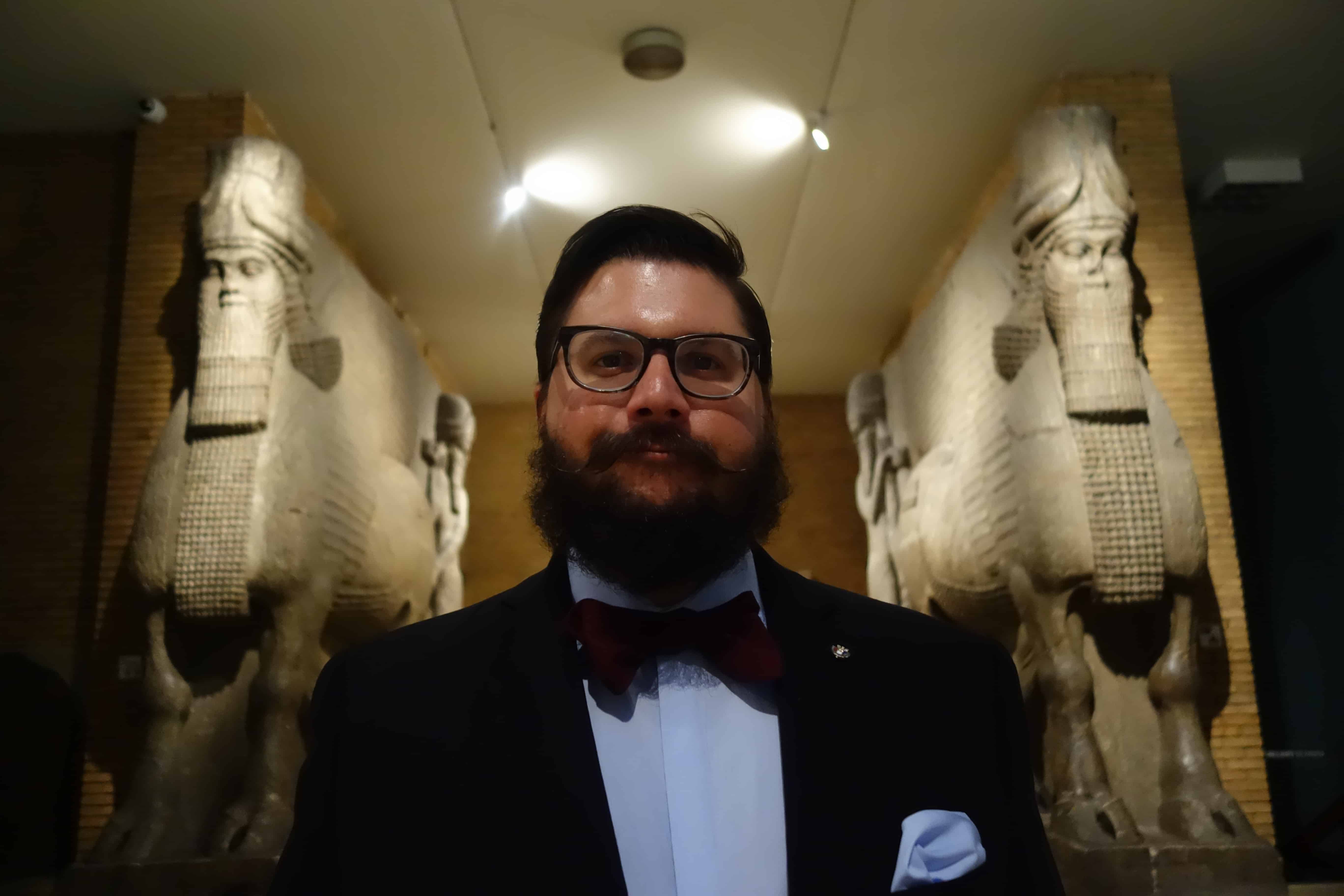
David Parrino: Intrepid Adventurer and Spectroscopy Extraordinaire
Shark Week Application Note by David Parrino
StellarNet Senior Technical Sales & Support
& OEM Business Director

